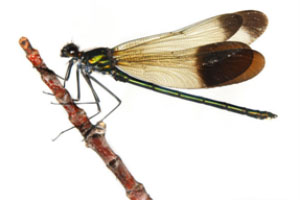This family of damselflies is known as the broad-winged damselflies because their wings are broader than other damselflies.
Photo Credit: Phil Myers
Calopteryx aequabilis
Common Name: river jewelwing
Other Scientific Names: Agrion aequabilis
Animal Guild: Insect
Class > Order > Family: Insecta > Odonata > Calopterygidae
